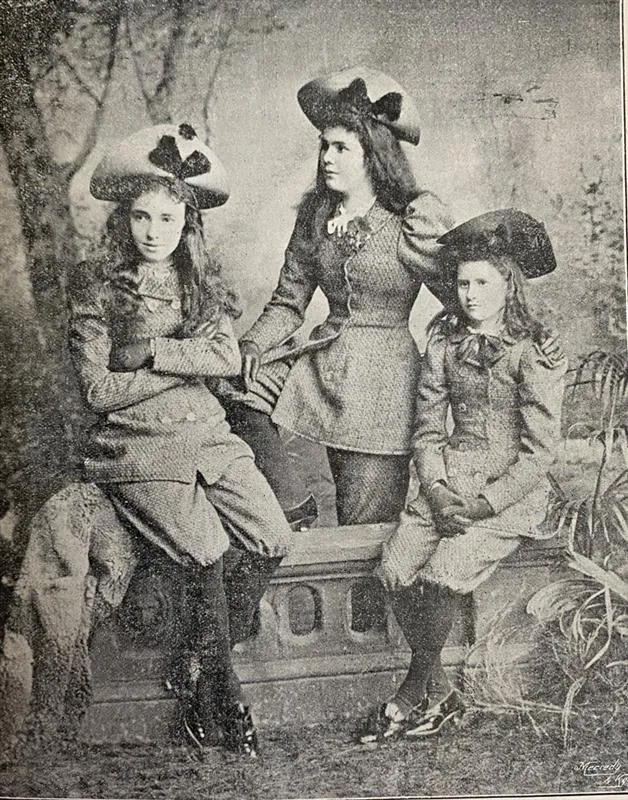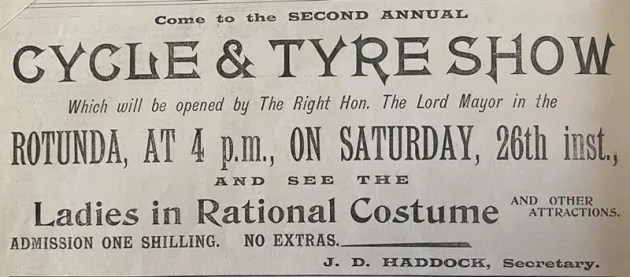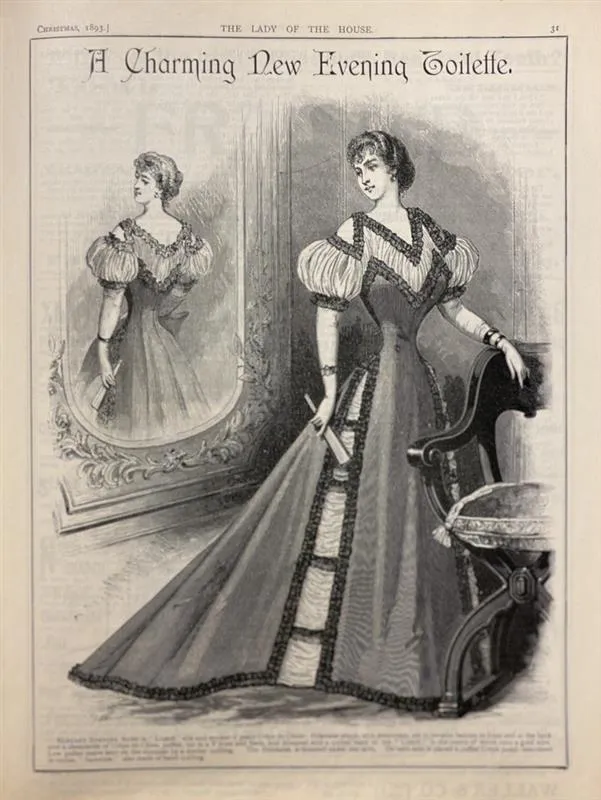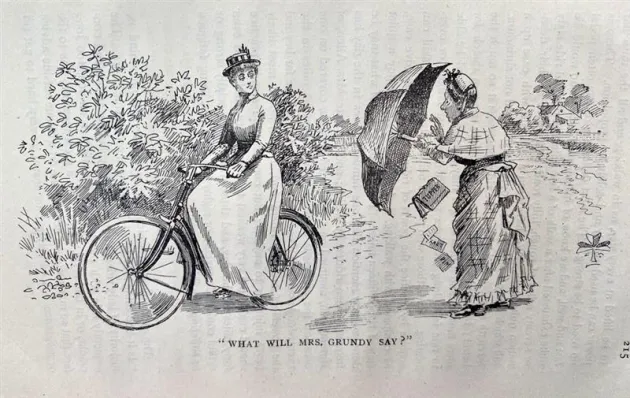Fast ladies and freewheeling women in 1890s Dublin
Published on 2nd October 2024
Stumbling across the unexpected is one of the great joys of working at Dublin City Library and Archive. We recently encountered this image of three young ladies in ‘rational’ costume in The Parnellite ‘newspaper magazine’ of February 1895, one of many in our collections of newspapers and periodicals.

Image: The Parnellite February 1895
An advertisement the previous month invited readers to visit that year’s Cycle and Tyre Show at the Rotunda to see “Ladies in Rational Costume and other attractions”. Having been billed as the main draw at the show, the girls, kitted out in smart knickerbocker suits, look confident and self-assured as though they are doing the most normal thing in the world: going for a cycle in the countryside. In fact, they were flouting the gender conventions of the time and paving the way for the independent, physically active new woman of the 1890s!

Image: The Parnellite January 1895
The idea of ‘rational’ dress for women had developed in reaction to the elaborate and confining fashion expected at the time. Having first put on stockings and garters, then drawers and a chemise, a stiff corset and finally a gown and jacket, the fashionable middle-class woman might find herself carrying an additional 25 pounds in weight. The restrictions of tight corsets and long skirts matched the social expectation that these women would confine their lives to the domestic sphere. In fact, women out on their own were even in danger of being regarded as having fast or easy morals. The rational dress movement aimed to encourage women to dress in a healthier way, wearing clothes that were more conducive to a natural physique and movement. The neat, woollen, waist length jackets and knickerbockers worn by the girls pictured in The Parnellite were typical of such costume.

Image: The Lady of the House Christmas 1893
Cycling had been growing in popularity in Ireland since the 1880s with younger gentlemen riding the penny farthing and older men and some ladies riding tricycles. However, the invention of the pneumatic tyre and the safety bicycle (with two wheels of equal size) ensured a smoother and faster ride. It also helped enable Irish women to push the boundaries of the belief that women were the fairer, frailer sex.

Image: The Art and Pastime of Cycling RJ Mecredy
By the mid-1890s, Dublin was in the grip of a cycling craze. The Ohne Hast (without hurry) Cycling Club was a mixed club for both men and women, as was the Sandymount and Pembroke Cycling Club, but it was Tipperary’s Nenagh Ladies’ Cycling Club that was the first all-female club to be established in Ireland, and indeed the U.K. However, lady cyclists were still often regarded as oddities and met with ridicule. R.J. Mecredy, editor of the Irish Cyclist, author of The Art and Pastime of Cycling and likely the Mecredy credited in the photograph of our rational girls, argued for appropriate dress for lady cyclists throughout this period whilst also warning of the adverse impact it might have on their acceptance.
Gradually they did become more acceptable and even sometimes had the last laugh. The Dublin Evening Telegraph of 21st August 1894 had it that in the face of being asked “What’s you? Be it man or woman?” a lady cyclist might by then have “the courage of her opinions” and present “an impassive front to spectators”, whilst later the Dublin Evening Mail of 15th March 1898 reported on a near collision on Duke Street in which a gentleman cyclist was thrown from his bike whilst the lady cyclist involved “kept her seat and by a dextrous move cleared the other machine and rode on safely.” Whilst the gentleman concerned became an object of mirth to the crowd who gathered around him, the lady “rode off, her face beaming with delight”!
Submitted by Teresa B in Dublin City Library and Archives